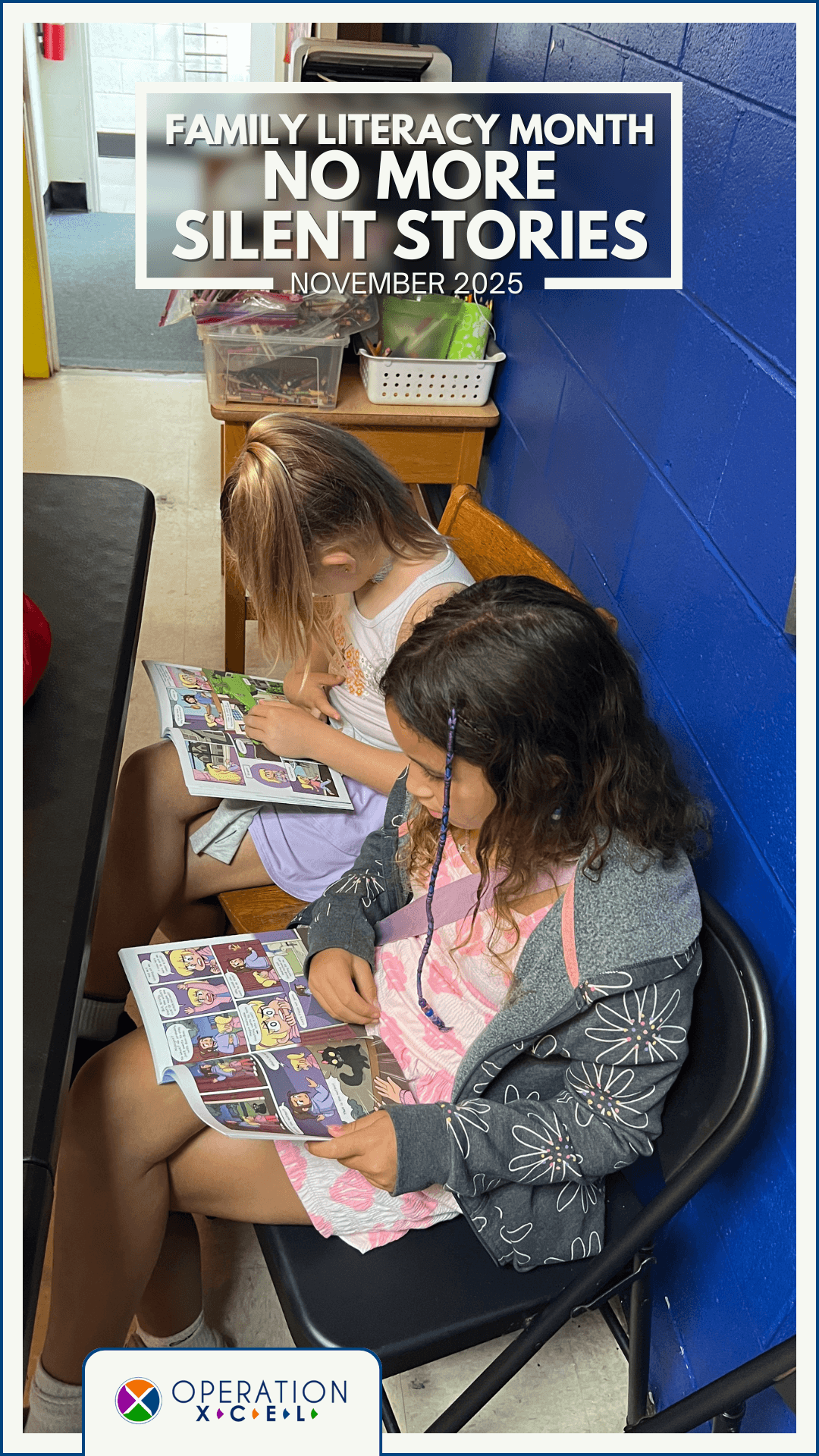
No More Silent Stories: Your Family’s Guide to Boosting Literacy Together
In a world filled with digital distractions, it’s easy for the quiet magic of reading aloud to get lost. Yet, the simple act of a family sharing a book holds incredible power, not just for building literacy, but for strengthening bonds and creating lifelong learners. This isn't just about homework help; it's about transforming literacy from a challenge into a joyful family journey.
The Undeniable Power of Shared Reading
When families read together, they ignite a spark far beyond decoding words on a page. Shared reading is a cornerstone of early literacy development, building critical skills from vocabulary to comprehension (Bus et al., 1995). For young children, hearing stories read aloud exposes them to complex language and narrative structures they might not encounter otherwise, significantly expanding their vocabulary long before they can read independently (Cacicio et al., 2023). This exposure is crucial: children whose parents read to them hear millions more words by kindergarten, directly addressing the "vocabulary gap" that can hinder future academic success (ABC Life Literacy Canada, n.d.).
Beyond the academic benefits, reading together fosters a deep emotional connection. It creates a safe, comfortable space where children associate books with positive experiences, reducing anxiety often tied to learning and school (NABU, 2023). This shared ritual strengthens family bonds and models the importance of reading as a valued activity, shaping a child's identity as a reader.
The Pitfalls of "Popcorn Reading"
While reading aloud is powerful, not all methods are equally effective. One common classroom practice that often misses the mark, especially for struggling readers, is "popcorn reading" (also known as round-robin reading). In this method, students take turns reading short passages aloud to the class, often with little preparation.
The drawbacks are significant:
- Anxiety and Fear: Students, especially those who struggle, often spend their turn dreading when it will be their time to read, rather than focusing on the story (Hilden & Jones, 2004). This can create negative associations with reading.
- Lack of Comprehension: The pressure to perform and decode words quickly often overshadows the goal of understanding the text (Ashworth, 2002). Students are so focused on getting the words right that they miss the meaning.
- Limited Engagement: Other students may tune out, knowing their turn isn't immediate, or struggle to follow along with halting, unexpressive reading (Hilden & Jones, 2004).
For families trying to build a love for literacy, popcorn reading can quickly turn a joyful activity into a stressful one.
Fun Ways to Overcome Illiteracy and Boost Family Reading!
Instead of rigid, performance-based reading, let's embrace approaches that make literacy an engaging and natural part of family life.
1. Make it a "Story Time" Event
Create a cozy atmosphere! Dim the lights, gather blankets, and make it a special ritual. Let kids pick the book. Their ownership increases engagement (Cacicio et al., 2023). You can even use different voices for characters to bring the story to life. Remember, the goal is enjoyment and connection, not perfect reading.
2. Interactive Reading: Chat About the Book!
Don't just read the words; discuss them! Pause frequently to ask open-ended questions:
- "What do you think will happen next?"
- "How do you think that character feels?"
- "Have you ever felt like that?"
- "What do you notice in this picture?"
This active engagement builds comprehension, critical thinking, and vocabulary more effectively than passive listening (Bus et al., 1995).
3. Take Turns & Echo Reading
For emerging readers, take turns reading pages or even sentences. You read one, they read the next (or repeat a sentence after you). This provides scaffolding and builds confidence without the pressure of reading an entire passage alone. You can also "echo read," where you read a sentence, and your child echoes it back, helping with fluency and expression.
4. Read EVERYTHING – Beyond Just Books!
Literacy is everywhere! Read street signs, cereal boxes, recipes, game instructions, menus, and even movie titles. Point out words in your environment and talk about what they mean. This helps children understand that print has purpose and power in their daily lives. Make library visits a fun family outing, encouraging children to choose books on topics that genuinely interest them.
5. Embrace Audiobooks
Audiobooks are a fantastic resource! They expose children to fluent reading, rich vocabulary, and complex stories without the burden of decoding. Use them on car rides, during quiet time, or even as a shared experience while doing chores. This allows children to engage with narratives beyond their current reading level, fostering a love for stories.
No More Silent Stories: Your Call to Action
The fight against illiteracy begins at home, with a shared book and a willing heart. By making family reading a consistent, joyful, and interactive experience, you're not just improving literacy skills; you're building stronger family bonds, fostering a lifelong love of learning, and empowering your children to write their own bright futures.
So, gather your family, pick a story, and let the pages come alive. There are no more silent stories in your home!
References (APA 7th Edition)
ABC Life Literacy Canada. (n.d.). The 3 biggest impacts of family literacy. Retrieved from https://abclifeliteracy.ca/news/the-3-biggest-impacts-of-family-
literacy/
Ashworth, B. (2002). Round robin reading: Is it an effective use of reading time? https://www.readingrockets.org/article/round-robin-reading-it-effective-use-
reading-time
Bus, A. G., van Ijzendoorn, M. H., & Pellegrini, A. D. (1995). Joint book reading makes for success in learning to read: A meta-analysis on intergenerational
transmission of literacy. Review of Educational Research, 65(1), 1–21.
Cacicio, T., Dees, D., & O’Brien, S. (2023). A brief on family literacy. National Center for Families Learning. https://familieslearning.org/wp-
content/uploads/2023/11/FLC60x30Family_Literacy_Brief_5.pdf
Hilden, K., & Jones, J. (2004). Round robin reading: The good, the bad, the alternatives. The Reading Teacher, 58(3), 294–297. https://doi.org/10.1598/RT.58.3.7
NABU. (2023, December 3). The impact of a parent's involvement on a child's literacy. https://www.nabu.org/news/the-impact-of-a-parents-involvement-on-a-
childs-literacy

